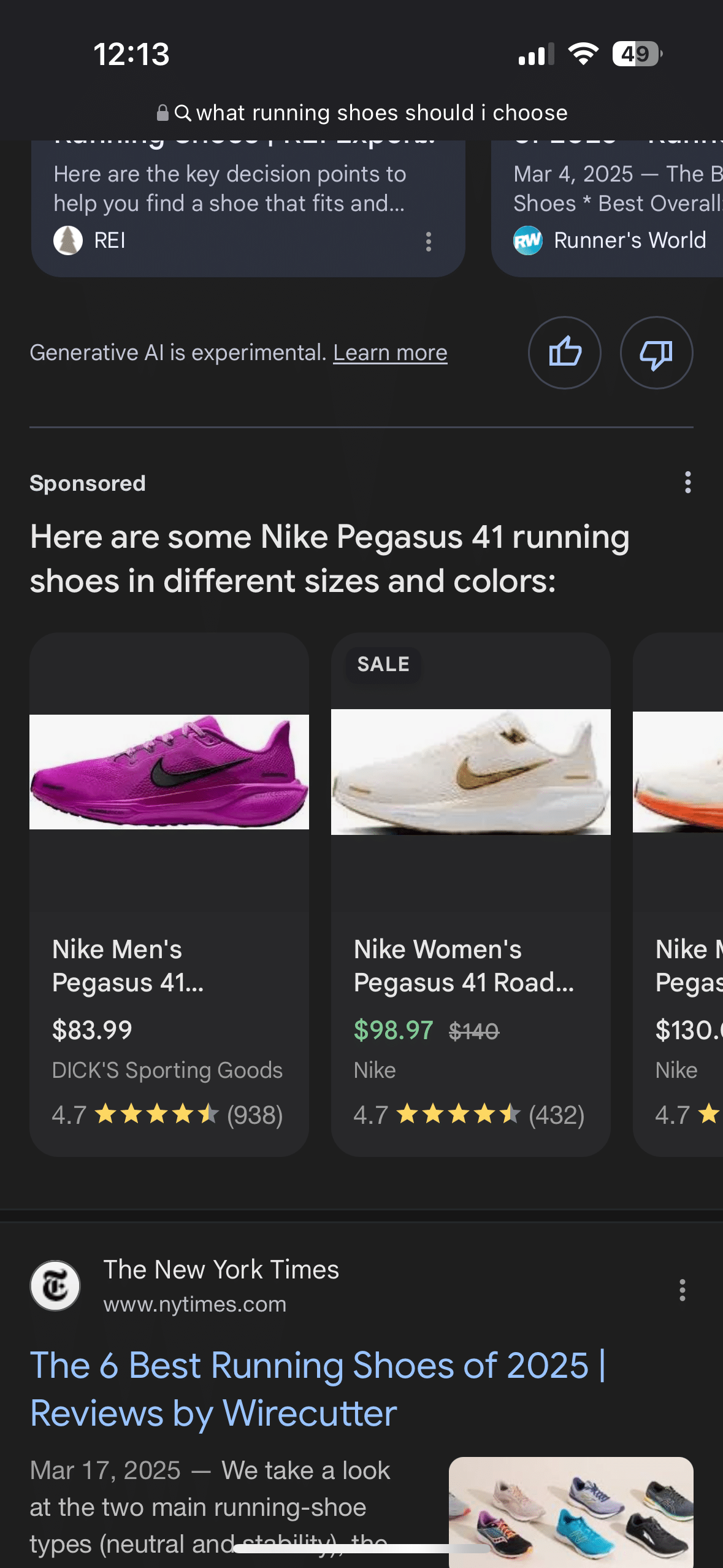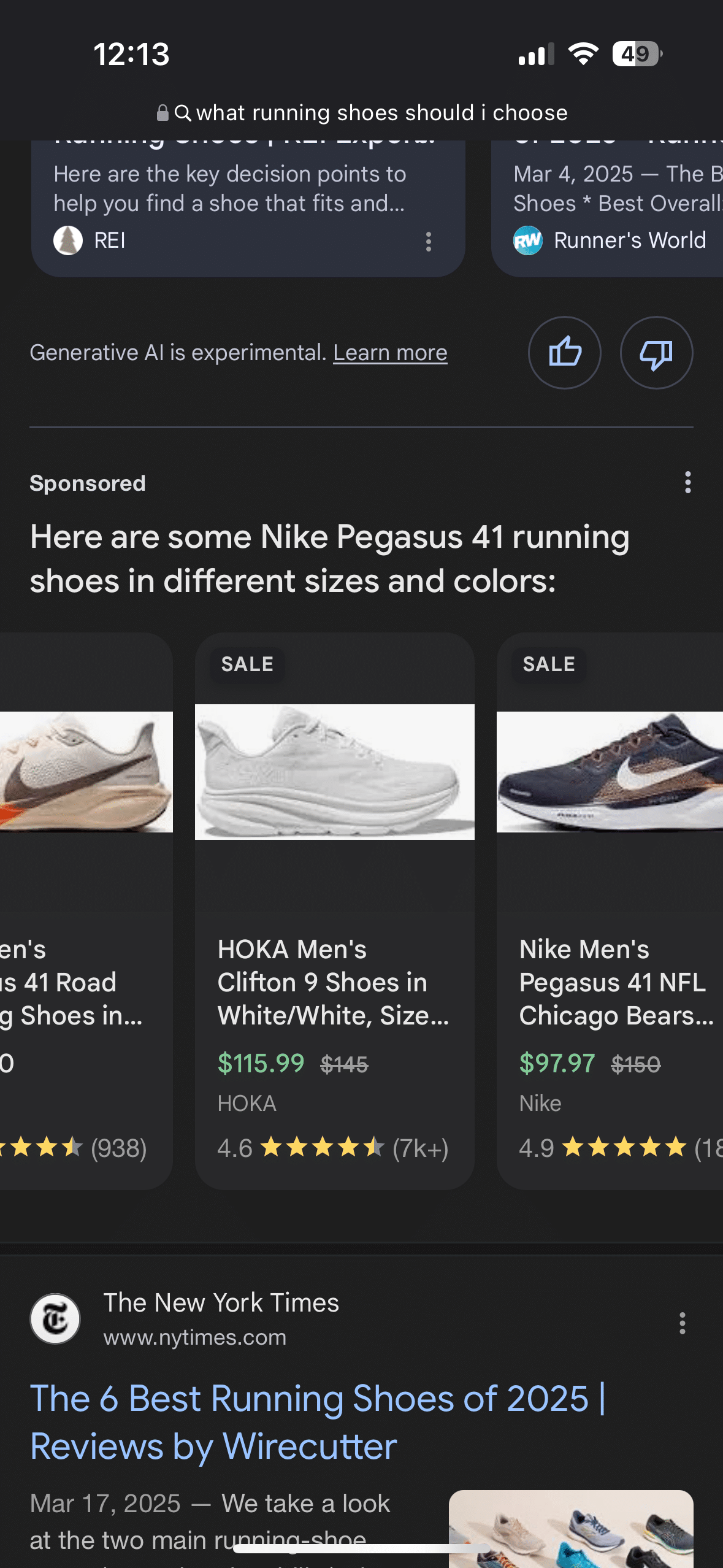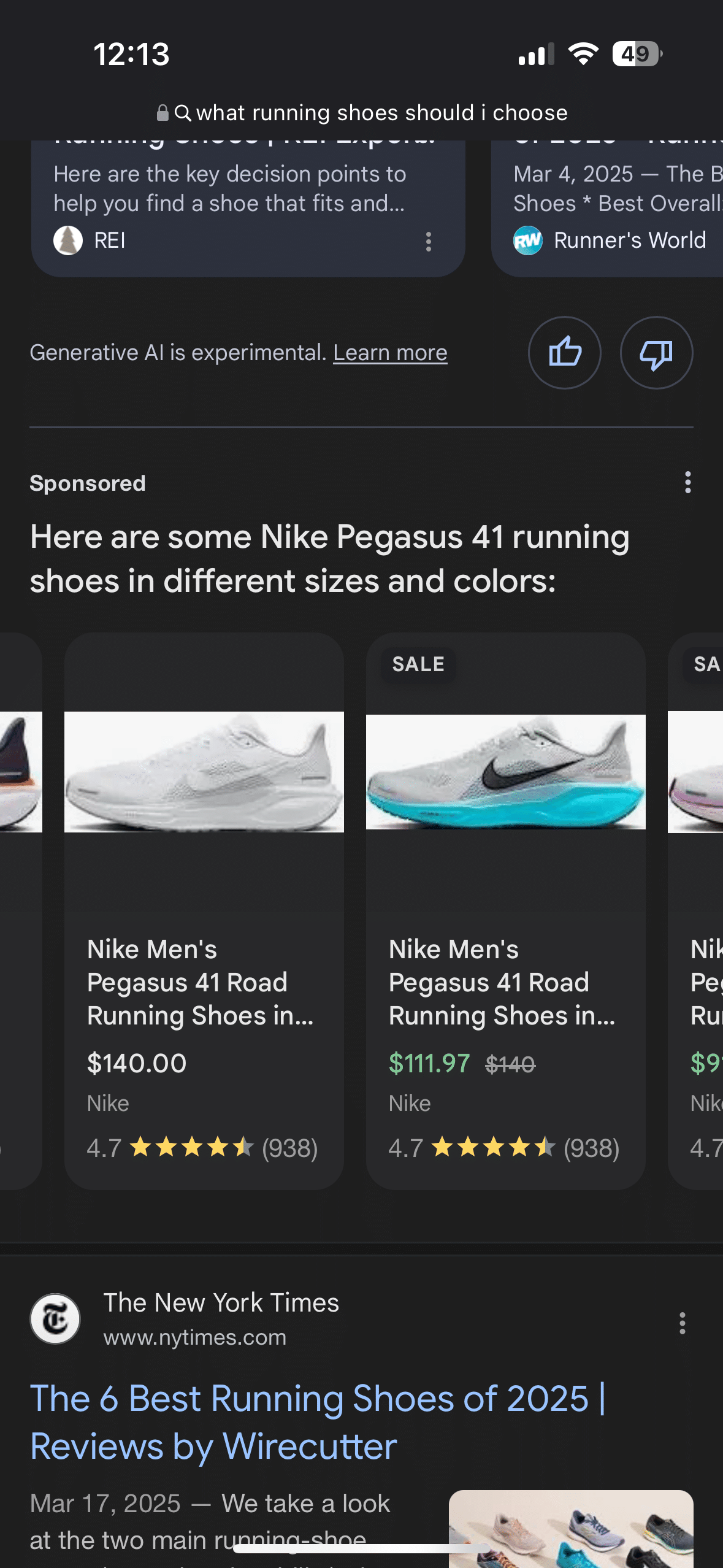How AI is transforming Google Search and what it means for advertisers
With AI Overviews now appearing in nearly 19% of search results and the upcoming rollout of AI Mode, search marketers are witnessing a fundamental shift in how users interact with search engines. These AI-powered features are leading to lower click through rates (CTRs), while creating new challenges for advertisers. In this article, we will break down both AI Overviews and AI Mode, their similarities and differences, and how they may affect Google Ads in the future.
Google Search’s evolution from SGE to AI Mode
In May of 2024, Google officially released what they called Search Generative Experience (SGE). In traditional Google fashion, the name was changed to what is now known as AI Overviews. Additionally, Google recently announced the release of AI Mode, Google’s more advanced AI-powered search. This raises concerns similar to those that we discussed during the initial rollout of AI Overviews.
From SGE to AI Overviews (AIOs)
AI Overviews utilizes generative AI to deliver short summaries based on the user’s search query. Usually appearing at the top of the Search Engine Results Page (SERP): this overview gives the user a lengthy list of responses, along with a list of website links where the information was pulled from. Users can now get their answers from various sources without the need to click on several search results, leading to “zero-click searches.” Additionally, paid search ads are pushed below these results, which can affect CTRs for ads. According to Seer Interactive, when AIO is present, CTR for paid ads drops roughly 9.8% compared to 21.27% from ads with no AIO present.
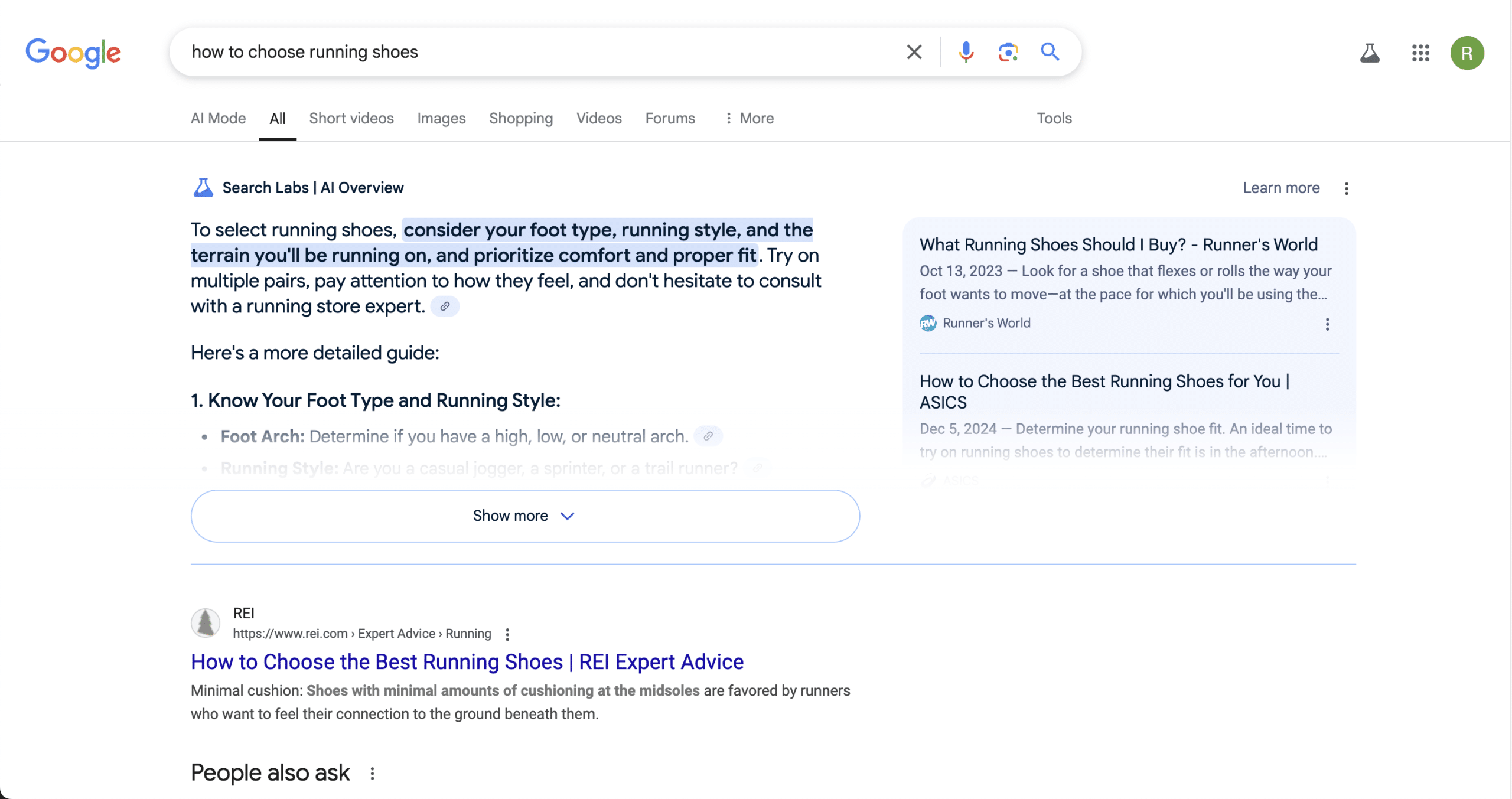
Register to get updates from our blog sent to your inbox!
AI Mode, the next evolution in Google search
Google recently introduced their answer to Open AI’s ChatGPT Search with AI Mode. Powered by a custom version of Gemini, AI Mode gives users a more comprehensive AI-powered response with the ability to dive deeper with follow up queries. It uses a “query fan-out” technique that combines related searches, sub-topics, and data sources together as a response. It is a completely new tab and can also be accessed at http://google.com/aimode. Similar to AI Overviews, AI Mode shows a sidebar with links to the websites it references. As these tools are changing how users interact with search results, the launch of AI Mode may give us a glimpse of where Google Search is heading in the near future.
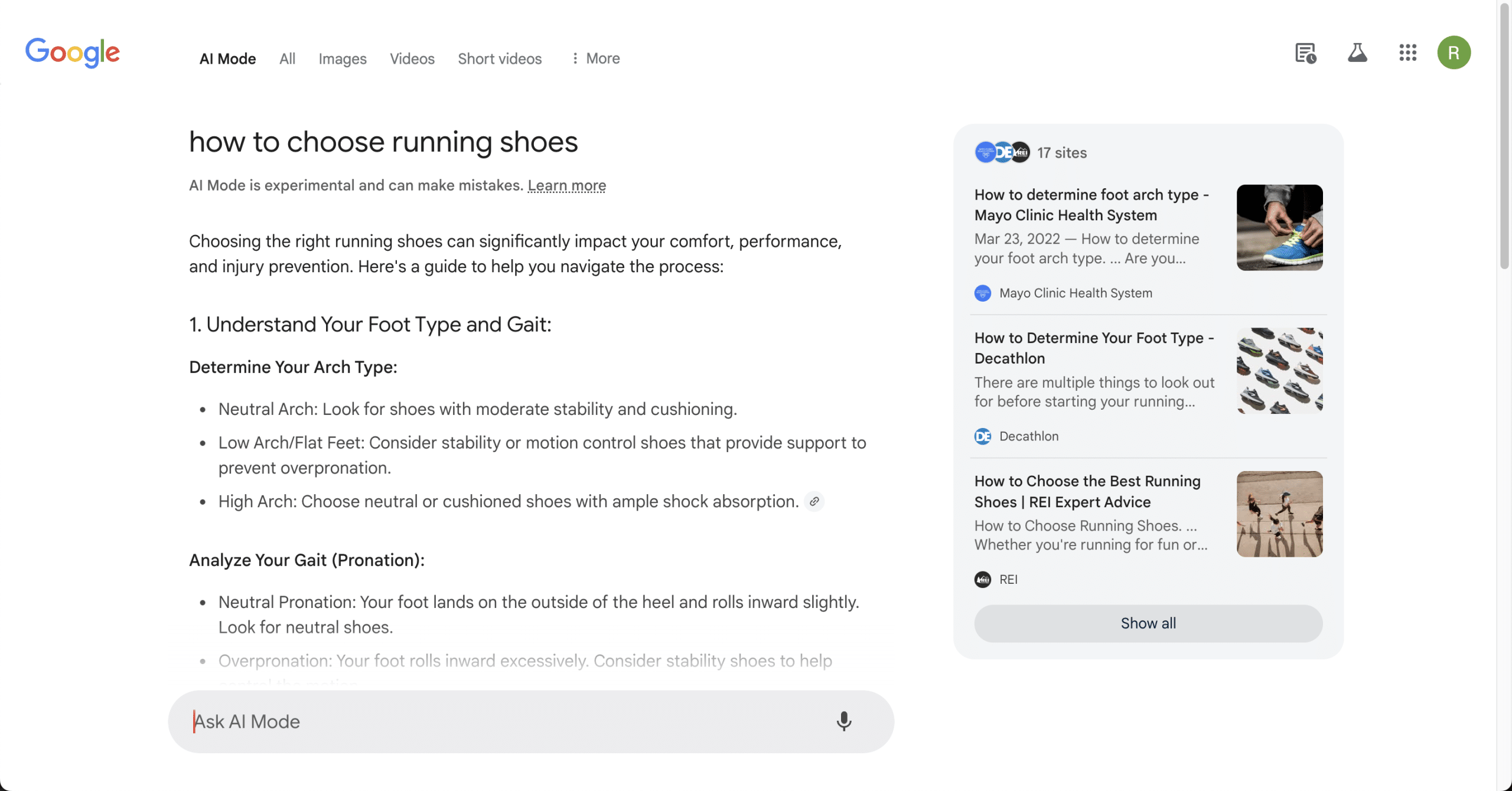
Google Ads in AI Mode?
According to AdWeek, Google has plans to incorporate Google Ads into AI Mode, using their learnings from AI Overviews to inform their approach to ads within AI Mode; Ads started appearing on mobile searches in AI Overviews late 2024. These ads appear at the bottom of the AI Overviews section (see below) and are sourced using Search, Shopping, and Performance Max (PMax) campaigns. Google seems to still be testing this feature, as ads in AI Overviews are only available on mobile and in the US and don’t always show up. Although we may still have time until we start seeing ads incorporated into AI Mode, advertisers should try to use AI Overviews as a learning opportunity.
Google Ads performance concerns within AI Mode
One of Google’s original company philosophies is to have people leave their site as quickly as possible. The idea behind this is that users who find exactly what they’re looking for will return to Google to search again. With AI Mode’s conversational interface, users are less likely to click out of Google to find their answer. If AI Mode leads to more users clicking on less search results, click through rates will decrease across the board. According to an article on SearchEngineLand, Navah Hopkins suggests that ads in AI Mode can:
- Lower click-through rates due to users staying within the conversation
- Have possible premium pricing leading to higher costs per click
- Potentially lower return on ad spend
Conversely, if users are more intentional with their queries in AI Mode, those who do click on ads may be more likely to convert into customers. This could be especially beneficial for Shopping ads. For instance, in our earlier screenshot where we ask AI Mode about “how to choose the best running shoes,” the research process helps us refine exactly what we’re looking for. If advertisers target the right keywords or offer products that align with user intent, the likelihood of a purchase increases. As a result, advertisers may attract higher-quality traffic, leading to lower bounce rates and fewer abandoned carts.
How can advertisers adapt to AI Overviews and AI Mode?
Google’s latest launch of AI Mode in Search represents another evolution in how results are delivered to users. This includes how ads will be delivered to users as well. While advertisers don’t have direct control over whether their ads appear in AI-powered search results, they should soon start to build their ads with this approach in mind. Here are some strategies to keep in mind:
- Optimizing creative assets
- AI Mode will present ads alongside conversational and informational answers. Craft your ad copy to ensure that it’s compelling and highly relevant is essential to capture attention away from the conversation.
- Bidding and budget strategies
- With potential lower CTRs and higher CPCs, advertisers will need to monitor and optimize their bidding and budget strategies. Adjust budgets according to user behavior and increased competition in the space.
- Refine your targeting
- To make sure your ads are only being shown to the most relevant users, advertisers need to leverage both first-party data and audience segmentation.
- Keyword strategy
- While only relevant to Search, advertisers should consider that AI-powered searches that trigger AI Overviews are long-tailed, informational queries. Over 96% of AIOs are triggered by informational user intent, with only 1.2% being transactional.
- Monitor performance
- Regularly monitor and analyze ad performance, test, and adjust according to data insights.
Future of Google Ads
It’s impossible to truly predict what the future of Google will look like. Although, we do like to make predictions ourselves. Nearly 75% of Google’s revenue is generated from ads, and in 2024 the company saw significant growth, even though their global market share dipped below 90%. Google Ads are not going anywhere, but how they are delivered will change, altering the user experience as well. Instead of fighting the machine, digital marketers need to work with Google’s changes to create the best campaign strategies that benefit both the business and the consumer.
Our premier PPC experts are here to help you optimize your ads for AI-powered search. Schedule a time to chat about your upcoming strategy or get an audit of your current Google Ads account.

